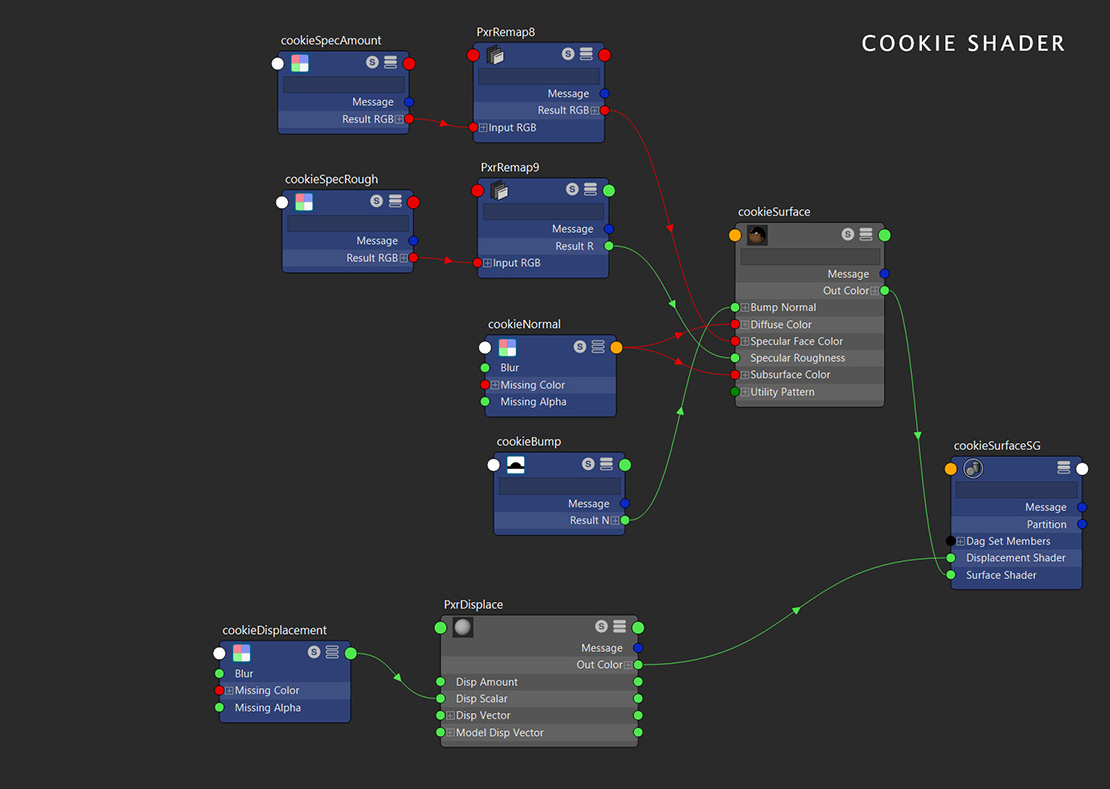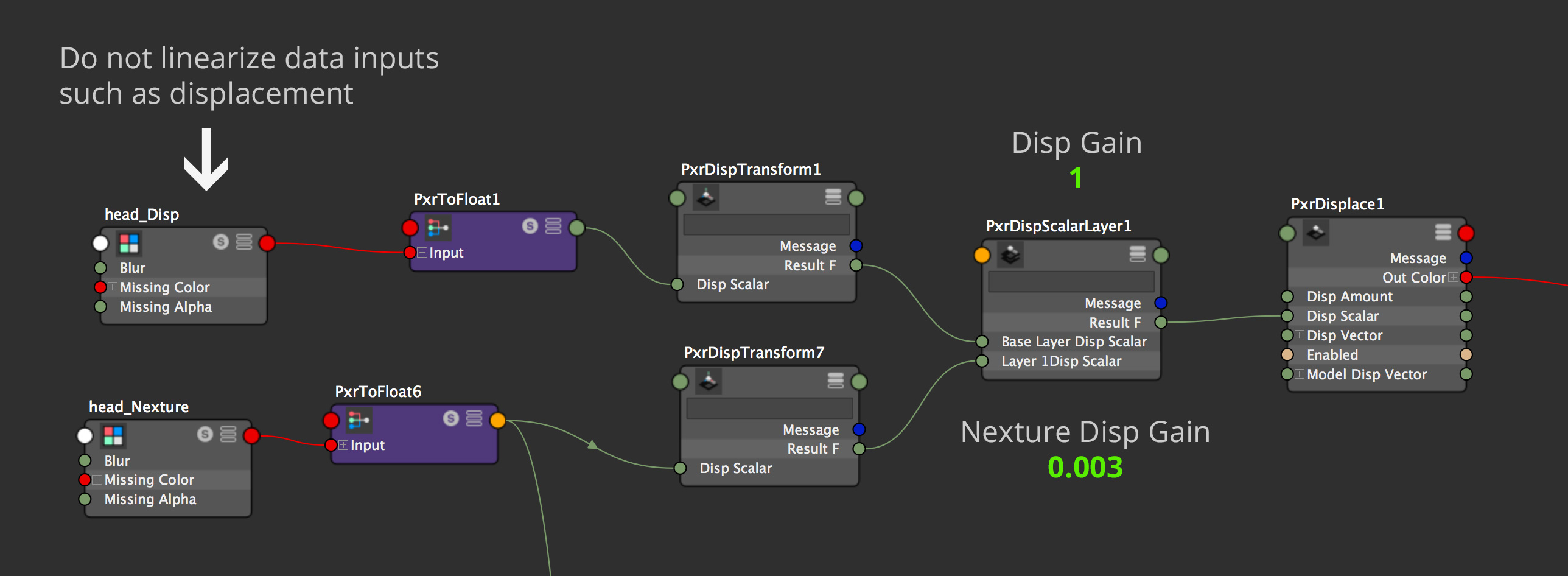
Renderman Tutorial Pxrsurface How To Do This
Physically based (PBR) shaders out of the box. Actually Cycles just implemented displacement as an experimental feature in 2.78 but true displacement is a bit faster in PRMan. Simply try to assign your renderer’s material, such as Arnold aiStandardSurface, 3Delight dlStandard, VRay vrayMaterial, Renderman PxrSurface, Redshift Was asked by a subscriber to run down how to do this in a video and solve some problems you may run in to with Renderman 21 PxrSurface Shader Tutorial Part.Rendering surfaces in RenderMan relies on a layerable material called PxrSurface.In general Id say that the advantages in RenderMan come when using advanced features: Displacement. You can of course assign any material than lambert1 to a Compound shape node using any standard Maya assignment ways, and of course, all the hierarchy items encapsulated in the compound will be rendered using that material.
So, don't use Maya Materials like Lambert, Phong or Blinn with RenderMan 21.Pixars RenderMan can mimic the behavior of real cameras. Other not fully supported Shaders have to be converted by render time and therefore may lead to unexpected results or just will be skipped. In this first look at the physical properties, we examine how we can figure o.It is recommended to use Shaders that will be delivered/installed with the Renderer, these are the Shaders that are 100 supported. As such there are some important benefits to this material:Renderman’s physical spec in the pxrSurface shader needs values from databases. Trust me, watch my video on using it.This is the same material model used in Pixar Animation Studios' feature animation.

It's by combining these lobe settings that you can make just about any material you imagine.In the parameters below, some of them can be overridden by a PxrLayer when connected to the Input Material or through a PxrLayerMixer. However, as different lobes are activated and tweaked, the material will change looks. Pay special attention to notes about performance considerations as well as hints on what combinations will be useful for particular effects.Below you will find each effect or lobe of the material has been separated into its own section to help users define the area they wish to learn about. We discuss all the different settings and their relevance to making certain materials.
These are globally obeyed for all layers. Italicized parameters are not able to be layered or overridden. Bold Face parameters are layerable, able to be overridden per layer. The results of these settings are unchanged. We recommend this material when you know you will be layering.
When roughness is 0.0, PxrSurface uses Lambertian model to calculate the diffuse response. This is where a wood color texture would go, for example.Diffuse roughness is how you would simulate a powdery surface like dried clay or dust. Below are examples at 0.0, 0.5, and 1.0 gain for a 50% gray material.Color is typically where textures or patterns are connected to create color for opaque objects. You may also drive this with another pattern to show things like fading or wetness (where liquid darkens a surface). This lobe is on by default.Gain is the weight applied to the diffuse parameters. These are often used to define primary color attributes for opaque objects wood textures, label text, polka dots, or more, you can find them all connected here.
This is off by default.This only applies when Double Sided is on. This is so the backface will be shaded instead of black. If this is not set, it will use the global bump normal specified in the Properties section near the bottom of this page.If on, illuminate both sides of the surface for this diffuse lobe, that is, this will illuminate the surface whose normal is pointing away from the camera (2-dimensional objects) as well. Combining diffuse exponent with Oren Nayar roughness does not make sense so it will be ignored when roughness is > 0.0.Bump mapping is a great way to fake the appearance of physical detail using shading instead. For example, on the moon surface, you can set a high exponent to produce a sharper falloff.Diffuse exponent only applies to the Lambertian diffuse, that is, when roughness is 0.0. Higher number gives us sharper falloff.

This effect is useful for thin objects like leaves or paper. This is ignored if Transmit Gain is zero. This sets the transmit color which could be different than the diffuse or back color. Below the Transmit Color is bright blue.This only applies when Double Sided is on.
Below we use a red Face Color and green Edge Color and increase the Fresnel Exponent from 0.1 to 1.5 and finally 5.0 with a small roughness.This is a parameter meant to describe a physical refractive Index the dielectric index of refraction for the material. If your face and edge colors are the same, then there is no visible effect. Higher numbers reverse this. Lower numbers reducesthe effect of Face Color while increasing the effect of Edge Color. Below we used black, 50% gray, and white.Specular fresnel curve exponent. You can control reflection intensity and even tint the result using this parameter in Physical Mode.
Since we support 3 color values to capture the spectral effect presets may be preferred over color pickers. Channel values for this parameter typically lie in the range 1 - 3. Since we support 3 color values to capture the spectral effect presets may be preferred over color pickers to avoid lots of tweaking.Extinction Coefficient is a second refractive index for the material useful for characterizing metallic behaviors.

0 means isotropic which produces the regular circular specular highlight. Below are examples from 0.0 to 0.5 and finally 1.0 (diffuse).Controls the shape of the specular highlights and reflections. Texturing this value may give you interesting effects like smudges, greasy fingerprints, and worn surfaces. Most objects will be realistic somewhere in between these values.
Lower numbers reduce the effect of Face Color while increasing the effect of Edge Color. You can control reflection intensity and even tint the result using this parameter in Physical Mode.Specular fresnel curve exponent. Below are examples of -1.0, 0.0, and 1.0.Understand that this control changes meaning in the Physical Mode and operates as a multiplier for the reflection result in Physical mode. If the Shading Tangent is specified, it is used instead.
When 0, the material reacts as a dielectric (glass, clearcoat). Since we support 3 color values to capture the spectral effect presets may be preferred over color pickers. Channel values for this parameter typically lie in the range 1 - 3. Below we use a red Face Color and green Edge Color and increase the Fresnel Exponent from 0.1 to 1.5 and finally 5.0 with a small roughness.Extinction Coefficient is a second refractive index for the material useful for characterizing metallic behaviors. If your face and edge colors are the same, then there is no visible effect.
The first two images are thickness 1 and 3 using the same Absorption Tint to show that thicker settings absorb more light physically. Below the shading ball has been given a bump on the Diffuse lobe only, making the effect of thickness more obvious for usage. It can be textured to vary color as well. Left to right are Copper, Gold, and Nickel.This control simulates a thick coating or glaze on the material. Since this is based on physical values you should find the presets more helpful than manual tweaking of settings.
Below are two solid colors and then a ramp, thickness remains constant at 1.0 The underlying diffuse lobe has a bump applied to it to help simulate the "thickness".


 0 kommentar(er)
0 kommentar(er)
